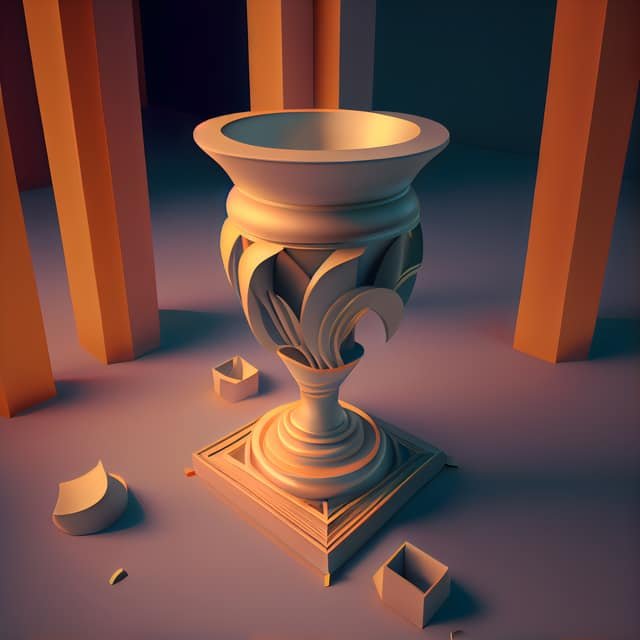What Does Catholicism Say About Cremation?
The practice of cremation has long been a subject of theological and ethical discussion within religious traditions, and the Catholic Church is no exception. Over the centuries, the Catholic Church has evolved in its approach to cremation, moving from outright prohibition to a more permissive stance. For Catholics, this shift raises important theological, moral, and practical considerations regarding the treatment of the deceased, the Church's views on the body, and the belief in the resurrection. Understanding the Church’s current teachings on cremation is essential for Catholics who may be considering this option, as well as for those seeking guidance about how best to honor their loved ones while staying true to their faith.
This guide will explore the historical background of Catholicism’s views on cremation, its evolution, the Church's current stance, and the theological underpinnings of this development. Additionally, we will discuss the Church’s teachings on the proper handling of cremated remains (or cremains) and the importance of upholding Catholic beliefs regarding the body and the resurrection.
Historical Background: Catholic Views on Cremation
Historically, the Catholic Church opposed the practice of cremation, holding that burial was the most respectful and appropriate way to dispose of the deceased's remains. For early Christians, burial was the preferred method because it mirrored the burial of Christ, and the practice became a symbol of hope in the resurrection of the body. The belief in the resurrection of the body, central to Christian doctrine, teaches that at the end of time, all people will rise again in bodily form, and their souls will be reunited with their bodies. Therefore, the physical remains of a person were seen as integral to this resurrection.
In the first few centuries of Christianity, the act of cremation was largely associated with pagan rituals. As Christianity spread throughout the Roman Empire, pagan practices were rejected, and cremation was viewed with suspicion. The early Christian Church did not see cremation as compatible with its belief in the sanctity of the human body or the resurrection. As such, cremation was prohibited in the Church for many centuries.
The Catholic Church’s stance on cremation remained largely unchanged throughout the medieval period and into the early modern era. During these times, the Church viewed the practice of cremation not only as a denial of resurrection but also as an act of defiance against Christian teachings. In fact, during the Middle Ages, the Church issued official decrees forbidding cremation.
Shifting Attitudes in the 20th Century
In the 20th century, however, the Catholic Church began to re-evaluate its position on cremation. Social and cultural changes, including shifts in public health, urbanization, and a growing lack of space for traditional burial, prompted the Church to reconsider its traditional prohibitions. Pope Paul VI, in 1963, issued the decree Piam et Constantem, which made an important concession to Catholics considering cremation. The decree acknowledged that, under certain conditions, cremation was permissible for Catholics.
However, the 1963 decree did not fully embrace cremation as an unqualified practice. The Church made it clear that cremation could only be chosen if it was not intended to undermine or deny the doctrine of the resurrection of the body. In essence, Catholics were allowed to opt for cremation if the choice was based on practical reasons—such as lack of burial space, cost considerations, or family preference—rather than as a rejection of the resurrection or an expression of anti-religious sentiment.
This shift was revolutionary for the Church, which had long resisted the practice of cremation. The Church’s new position reflected an attempt to balance the growing needs of society with the essential theological beliefs of Christianity. The decision was also a recognition that cremation itself was not inherently incompatible with Catholic teaching, provided it was conducted in a way that respected the sacredness of the body and its eventual resurrection.
The Catholic Church's Current Stance on Cremation
Today, the Catholic Church officially permits cremation, though there are specific guidelines that Catholics must follow when choosing this option. The key is that the decision to cremate must not be made with the intent to deny the resurrection of the body or to express any sort of defiance against Catholic doctrine.
The official position on cremation can be found in the Catechism of the Catholic Church (CCC), as well as in documents issued by the Vatican, including the 2016 instruction Ad Resurgendum cum Christo, which provides specific guidance on cremation and the handling of cremated remains.
The Sacredness of the Body
The Catholic Church teaches that the human body is sacred. Catholics are called to respect the body as it was created by God, and it should be treated with reverence, both in life and after death. This teaching reflects the theology of the body, which emphasizes the dignity of the human person. The body is not simply a material object; it is the dwelling place of the soul and is part of the person’s identity.
Whether opting for burial or cremation, Catholics must approach the body with respect. This includes choosing a method of disposition that reflects the reverence due to the body. While cremation is now an accepted practice, it is vital that Catholics ensure the decision is made with proper reverence and not as a rejection of the Church’s core belief in the resurrection of the body.
Cremation Is Permissible but Not Preferred
While cremation is now permitted, it is still not the Church's preferred option. The Church encourages burial because it more clearly reflects the Christian belief in the resurrection of the body. Burial allows the body to rest in the earth, from which it came, and symbolizes the hope that one day the body will be resurrected.
However, the Church acknowledges that cremation can be an acceptable alternative under certain conditions. These include situations where burial is not possible due to space constraints, financial difficulties, or local cultural customs. The Church has recognized that cremation is sometimes a practical and reasonable choice, especially in regions where land for burial is limited or where local customs make cremation more common.
Importantly, the decision to cremate should not be driven by secular or anti-religious motives, such as a desire to deny the Christian hope of the resurrection. As long as the cremation is not a denial of the resurrection and the body is treated with dignity, the Church permits it.
Handling of Cremains (Cremated Remains)
One of the most important aspects of Catholic teaching on cremation is the proper handling of cremated remains. The cremains should be treated with the same respect as the body itself. The Church instructs that the cremated remains should not be scattered or divided among family members, and they should never be kept in jewelry or other items of personal use.
The preferred method of handling cremains is to place them in a sacred and consecrated space, such as a cemetery, columbarium, or mausoleum. These places are dedicated to the respectful interment of human remains. The Church is clear that the ashes should not be spread in natural settings, such as in the ocean or at a mountain peak, as this could be seen as disrespectful to the person’s remains and to the Catholic belief in the resurrection.
Catholics are urged to avoid storing cremains at home or using them in non-sacred places. The Church encourages families to place the cremains in a permanent resting place where they can be honored and commemorated appropriately. This reflects the idea that the body—and by extension, the cremated remains—should be treated with dignity and respect, and not as an object for sentimental use.
Funeral Mass and Cremation
When cremation is chosen, it is customary to have a funeral Mass before the cremation takes place. The funeral Mass is an opportunity for family and friends to gather and celebrate the life of the deceased while also praying for their soul. If cremation occurs before the funeral Mass, the cremains should be present at the service, and they should be treated as the remains of the person, with the same respect afforded to a body.
The Church allows cremation before the funeral service if it is unavoidable, but the funeral Mass should still be the central liturgical event. If the cremains are not present during the funeral Mass, they should be brought to the Church before the liturgy begins and placed in a respectful location.
Theological Significance of Cremation in Catholicism
The Catholic Church's acceptance of cremation is based on a profound understanding of the theology of the body and the Christian belief in the resurrection of the body. Catholics believe that when Christ returns at the end of time, the bodies of the dead will rise, reunited with their souls in glorified form. This belief in the resurrection is foundational to Catholic teaching and is expressed in the Apostles’ Creed and the Nicene Creed, where Christians affirm their faith in the resurrection of the dead.
Because the resurrection of the body is such a central tenet of Catholic faith, the Church has always held that the human body is not just a temporary vessel, but an essential part of a person’s identity. The body was created by God and is integral to a person’s dignity and worth. Cremation, when chosen for the right reasons, is not seen as a denial of this belief but rather as a pragmatic choice that can be made with respect for the body’s sacredness.
The Church also emphasizes that the human person is a unity of body and soul, and both are important aspects of the person. This theological understanding underpins the Church’s respect for the body, even after death. Cremation, if done reverently, can be seen as a respectful acknowledgement of this unity, recognizing that the body, even in death, is still a sacred creation of God.
A Respectful Approach to Cremation
Essentially, Catholicism now permits cremation, but it is essential for Catholics to approach the practice with a deep sense of reverence and respect for the sacredness of the body and the resurrection of the dead. Cremation is acceptable, provided it is not chosen with the intention to deny Catholic beliefs, particularly the belief in the resurrection of the body.
The Church's teachings on cremation reflect a balance between cultural changes and the theological understanding of the body and the resurrection. For Catholics, cremation should be done with respect, and the cremains should be treated with dignity, either by placing them in a sacred location or following the Church’s guidelines for their interment.
Catholics who choose cremation must ensure they are following the Church’s guidelines and seeking to honor the remains of their loved ones in a manner that respects their faith. This approach ensures that cremation is consistent with Catholic teaching and serves as a testimony to the hope of the resurrection. Ultimately, whether opting for burial or cremation, the goal is to honor the sacredness of the body and the belief in the eternal life that follows death.






























This comprehensive guide to scattering ashes at sea walks you through every step of the journey—from the practical to the profoundly meaningful.
You'll find everything you need to know, including EPA regulations and legal requirements, how to prepare for ocean conditions, what to say or read during a scattering ceremony, and the emotional and environmental benefits of choosing the sea as a final resting place.